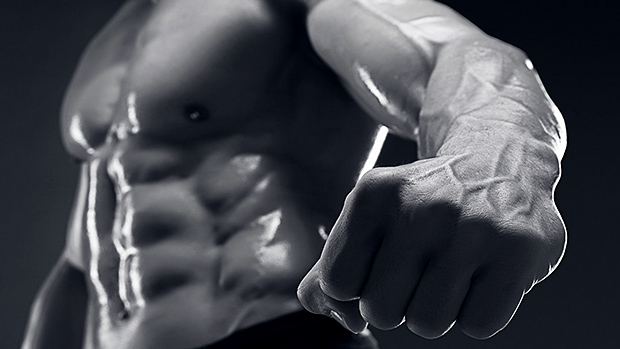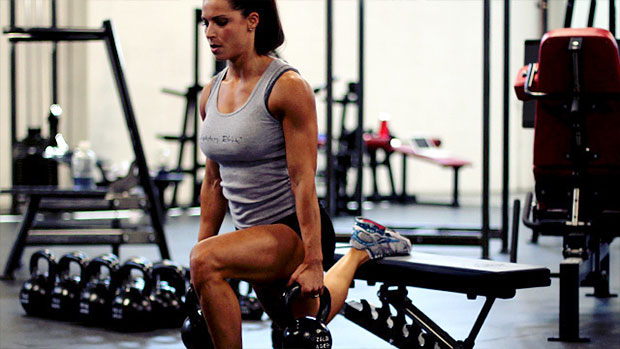High Intensity Continuous Training
HICT is a way for everyone from special ops guys and adventure athletes to everyday gym-goers to become stronger and more fit. It was made popular by Joel Jamieson, trainer of UFC fighters.
HICT trains a strong, high-quality movement pattern while developing the alactic and aerobic energy systems that are often neglected in conventional workouts. It's also got some interesting mental performance benefits when done properly.
The idea is to use a big movement that can be done sustainably for a long time. Goblet squats, step-ups, push-ups, and ring rows work well. Dragging a tire while keeping your heart rate below about 150 is essentially a HICT workout. So is hiking up a hill. This heart rate "max" will vary from person to person, but a general rule is that you should be able to breathe through your nose the whole time.
In order to keep each effort strong, we keep the reps very low, usually 1-3 at a time, sometimes 5 reps for a quicker movement like a sledgehammer swing. It just needs to be below about ten seconds of total work, and ideally below 5 seconds so that you don't have to rest as long.
For example, you do a set of 1-3 push-ups and then rest while taking a few breaths. Then you do another set. You do 2 reps, breathe a little, 2 reps, breathe a little, and continue in this way. HICT bouts are typically 5-20 minutes total per workout, per movement pattern. So you might do 15 total minutes each of step-ups, ring push-ups, and chest-supported rows.
HICT Block Using Ring Push-Ups
That can be done as a continuous block, or split into multiple sets, like 5 minutes of each movement done for three rounds, or something in between. You can also do multiple exercises within the same basic movement pattern to increase movement and load variability and cut down on boredom. An example would be 3 minutes of safety bar squats, 3 minutes of barbell front squats, and 3 minutes of goblet squats for a total of 9 minutes of work.
Let's recap, because we need to get this right so that you're targeting the right energy system:
- Do 1-3 reps, 5 reps if it's a really quick movement. Ideally, it should take 5 seconds, 10 tops.
- Rest a few seconds by taking a few breaths. You should be able to breathe through your nose the entire time.
- Do another set in the same way. Rest a bit.
- Continue in this manner for the allotted time period, which can be anywhere from 5 to 20 minutes.
HICT Block Using Bench Press
As you fatigue and your energy systems stop fully recovering, you may start to feel a bit of lactate build up in the working muscles each time you do a rep. A little flash of that is okay, as long as you're giving your body time to clear it away before you start the next set of reps. You just don't want the lactate to accumulate, because then you're training the wrong energy system.
With a HICT workout, we're training the muscles in a movement pattern to produce force over and over as often as possible, while staying within the targeted energy systems (ATP-PC and aerobic, but more on that later). This produces a few specific adaptations, including:
- Increased mitochondrial density. More "powerhouses" in your muscles to make energy.
- Increased oxidative capacities of fast twitch muscles. You can produce maximal force with the ATP-PC system for longer per bout, recover faster, and do it more times.
- Eccentric cardiac hypertrophy. The heart pumps more blood with each stroke.
- Increased local vascular networks. Your muscles have better circulation.
You've got three different energy systems in your body. They're all working at any given time, but one tends to dominate over the others depending on the activity.
- Alactic or ATP-PC System. This is your shortest-lived and most powerful system. If you're doing something heavy or powerful, like 1-5 reps of squats or a short Prowler sprint, it's employing this system. It'll last for roughly 10-14 seconds before fading out.
- Anaerobic System. This one runs without requiring oxygen and burns carbohydrate, like the glucose and glycogen in your bloodstream, liver, and muscles. It's as powerful as the ATP-PC system, but is usually fully spent after about 60-90 seconds of maximal effort. These systems are trainable, so your actual capacity in them is dependent on a host of factors like your training background, genetics, and nutrition.
- Aerobic System. The aerobic system is the least powerful of the three, but can function literally all day and can alternate between stored fat or carbohydrate as a fuel source. It also drives the recovery of your ATP-PC and anaerobic systems, so the better your aerobic system, the faster and more effectively you can recover between sets of heavy lifts or sprint intervals.
These systems work together in a symbiotic way, meaning that if one of them is impaired it can hinder the performance of the others. Thus, it's important to train all three systems over the course of a long-term program. This enables better performance and recovery, and keeps you from developing limiting factors that leave you feeling stuck and stalled out.
Most lifters train the anaerobic system day-in and day-out, but they don't always train the other two, particularly the ATP-PC system, and that's where HICT training comes in.
It's important to note that the glycolytic and aerobic systems are on the same pathway, so your body has to make adaptations in one direction or the other. If you do a glycolytic workout, it interferes with your ability to improve your aerobic system.
This doesn't mean that you should always avoid anaerobic training; it just means that it shouldn't be the only type of training that you do. It's about balance, and finding the right thing at the right time.
In addition to the anaerobic system, we need both the ATP-PC system and the aerobic system, which means that both must be independently trained.
Someone who has a good aerobic base from lower intensity aerobic work is able to do the same work as someone else with less effort. They can keep their heart rate at 120 while the person next to them who only does glycolytic work has to keep his heart rate at 150 to keep up. Effort becomes more expensive for the less aerobically fit person.
Limited alactic and aerobic development impairs your ability to produce maximal short-term force, recover from intense bouts in either the lactic or alactic system, and lowers the amount of work you can do without tapping into your very limited glycolytic system. In short, it lowers your physical potential. HICT fixes this issue.
HICT workouts have an important component, which is the mental side of exercise. Exercise is teaching your brain to make a vast array of associations and predictions. When you do something like HICT, it's an opportunity to teach your brain that you can put out a large amount of continuous work without requiring a stress-response to do it. You're improving what your brain sees as a "go all day" level of output.
Some people call that old man strength. It's the ability to exert a lot of force calmly and repeatedly, like your 80-year old grandpa who can still throw hay bales all day without looking tired because to him it's not a big deal.
The emotional perspective built into the activity becomes trained and associated in the same way that a movement pattern does. If someone has to elevate their heart rate and flood their body with cortisol and catecholamines in order to do push-ups for five minutes, then they'll never be able to do push-ups without bringing that stress response along with it. Eventually, they begin to associate all physical movement with a surge of stress and cortisol.
On the other hand, you can train it to associate the workload with calm breathing, good positioning (meaning the alignment of your joints), and good cognitive function, and then you'll be capable of putting out physical work easily. It becomes the metabolic equivalent of extra cash in your bank account. You can spend freely because you have a lot of reserves that haven't even been touched yet.
How would you incorporate HICT into daily training?
Sometimes we'll precede HICT with a low-volume, high intensity effort, like a gym PR, or a near-max lift like a heavy deadlift or squat, or a series of explosive movements like plyometric drills. From there, most of the workout would be HICT volume work. That way, you're getting a sort of activation phase and ramping up your nervous system prior to starting the HICT work.
Other times, we'll just go straight into HICT work following the warm up, particularly if time is limited. We'll also drop in short HICT blocks in place of more conventional set and rep protocols so that you're doing open-ended work instead of finite, fixed quantity work, and are staying within the alactic and ATP-PC energy systems.
So, instead of doing 5 sets of 5 overhead presses, or even 10 sets of 3, you'd do the presses for 5 minutes of HICT work and get in as much volume as possible in that amount of time within the constraints of the protocol.
Would you use more than one HICT bout (i.e., sledgehammers and step-ups) in a single workout?
Yes, we typically use a variety of movements in a workout. Most often, we'll have one or two days within a program that are primarily HICT work. So depending on whether we're doing an upper-lower split or a full-body workout, we'll gear the session to hit everything we need through HICT work. It's all an interwoven series of protocols to hit the energy systems, movement patterns and strength levels that we're trying to develop.





